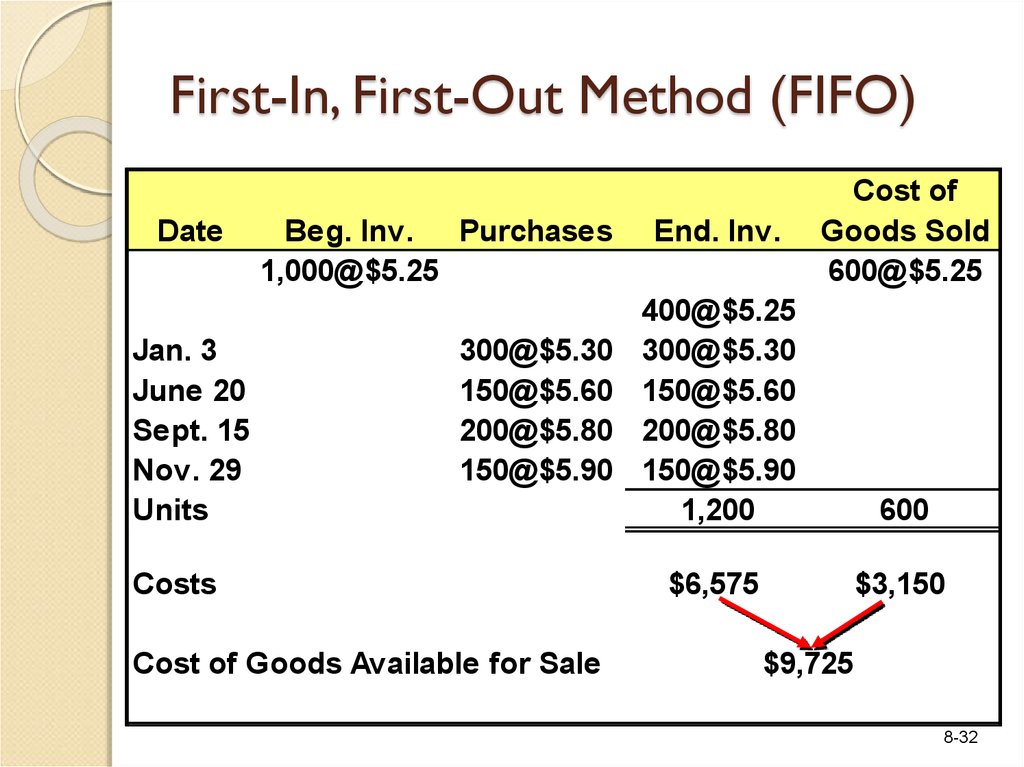

Cost of goods sold during the year 2016.Cost of ending inventory at 31 December 2016.Required: Compute the following using first-in, first-out (FIFO) method: On 31st December 2016, 600 units are on hand according to physical count. 01: Beginning balance 400 units $18 per unit. The information about the inventory balance at the beginning and purchases made during the year 2016 are given below: The company then applies first-in, first-out (FIFO) method to compute the cost of ending inventory.

The Sunshine company uses periodic inventory system. The company makes a physical count at the end of each accounting period to find the number of units in ending inventory. The following example illustrates the use of FIFO method in a periodic inventory system: Example: Once the cost of ending inventory has been computed, the cost of goods sold can be computed easily using the following simple formula:Ĭost of goods sold (COGS) = Beginning inventory + Purchases – Ending inventory

At the end of accounting period, the quantity of inventory on hand (ending inventory) is found by a physical count and if the FIFO method is used to compute the cost of ending inventory, the cost of most recent purchases are used. In a periodic inventory system when a sale is made, the entry to record the cost of goods sold is not made. If you want to read about its use in a perpetual inventory system, read “ first-in, first-out (FIFO) method in perpetual inventory system” article. This article explains the use of first-in, first-out (FIFO) method in a periodic inventory system. Under first-in, first-out (FIFO) method, the costs are chronologically charged to cost of goods sold (COGS) i.e., the first costs incurred are first costs charged to cost of goods sold (COGS).


 0 kommentar(er)
0 kommentar(er)
